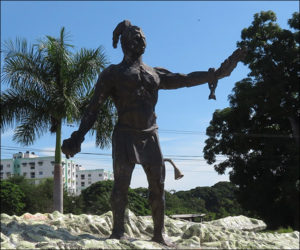


The ship’s owner, Vicente Dias, served as its captain to protect his investment, and he directed the pilot and crew to tack the ship toward shore slowly, alert for shoals. Pedro had been purchased by previous traders farther north along the coast and then trained by Prince Henrique’s men to serve as an interpreter with the Budomel and other Wolof chieftains. The pilot summoned the ship’s black slave, Pedro, who confirmed their arrival. There was no port, just a beach suited for landing abreast the open ocean and sheltered from the southbound current. The three men agreed they had arrived at a Wolof kingdom ruled by a local chieftain the Portuguese referred to as the Budomel, Lord Budomel, or simply Budomel, with whom the Portuguese had traded for over five years.

The pilot estimated they had coursed more than sixty miles south of the Río de Senega, which separated the great desert of the north from Guinea, the tropical land to the south. The ship cruised rapidly, propelled by steady northeasterly winds that blew offshore to sea-permitting it to run with the wind without tacking-and a strong current that swept south along the coast. Its owner, the pilot, and a young merchant stood together on the stern deck and studied the shoreline some miles east, comparing it to their chart based on voyages of previous Portuguese traders. PROLOGUE: 1455 CA’ DA MOSTO Land of the Budomel (North of Dakar, Senegal, Africa), April–May 1455Ī solitary caravel, dispatched by Prince Henrique of Portugal and flying the colors of his nephew the Portuguese king Afonso V, sailed southward in the Ocean Sea along the west coast of Africa, its lateen sails emblazoned in red with the square cross of the Order of Christ.


 0 kommentar(er)
0 kommentar(er)
